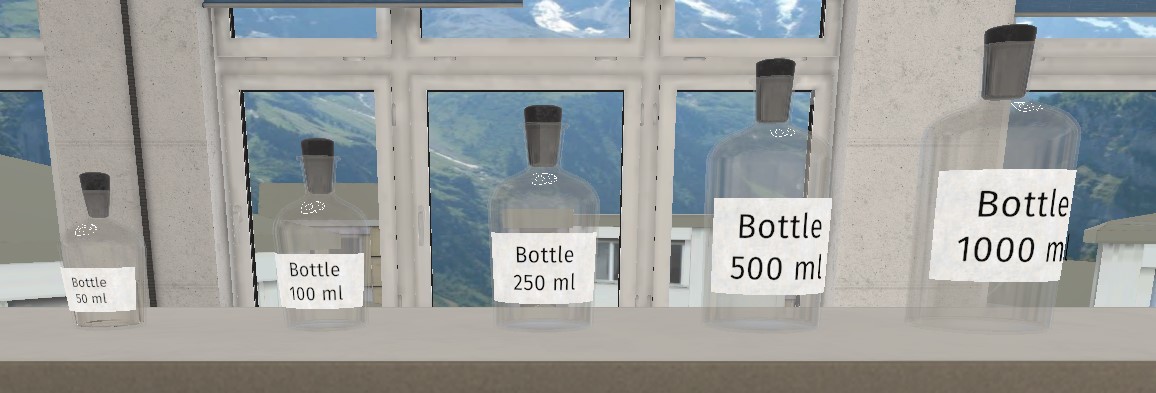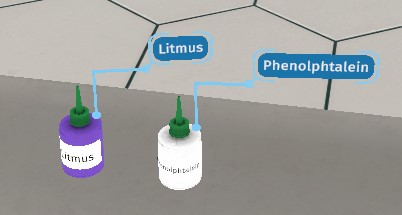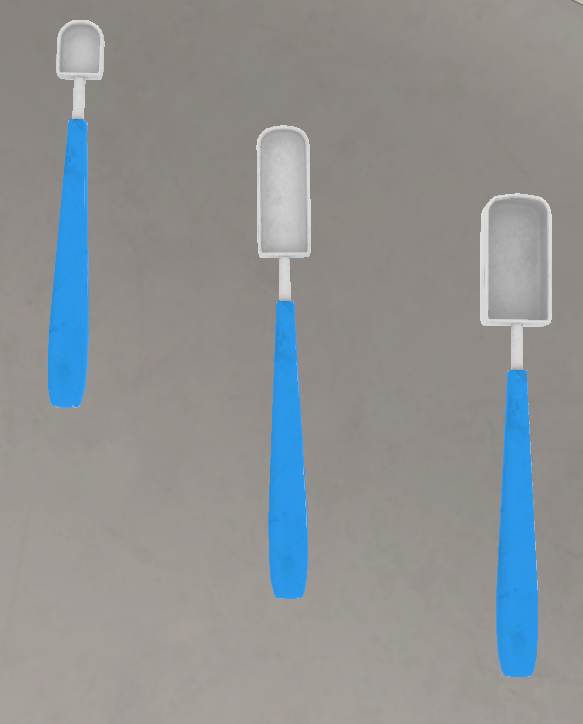TABLE OF CONTENTS
General information
Container in the lab is any item that can be used in the laboratory to hold a reagent in any form (solids, liquids, gases). Containers usually come in a variety of volumes. In the standard case volumes of 50, 100, 250, 500 and 1000 mL are available, but other volumes may be made available as well (see container description).
Container descriptions provided below are grouped into three broad types:
1. Storage containers. A key property of storage containers is substance purity. Reagents cannot be added to storage containers but can be withdrawn.
2. Reaction vessels. A reaction vessel is a universal container that can hold any substance that is available in the laboratory in any form, as well as mixtures of substances.
3. Miscellaneous containers. Containers that were not included in the other categories: measuring vessels, transfer containers, and containers for specific procedures.
Storage containers:
Narrow-mouth bottles
Bottles come in volumes from 50 to 1000 mL and used for liquids storage.
- Narrow-mouth bottles can only contain liquids.
- Reagents CANNOT be added to bottles.
- Reagents can be poured out of bottles or withdrawn by another method (eg with a pipettor).
- Narrow-mouth bottles are used in the laboratory for storing and dispensing pure substances or specific mixtures of substances in liquid form.
Wide-mouth bottles (Jars)
Jars, or wide-mouth bottles, come in volumes from 50 to 1000 mL and used for powders storage.
- Wide-mouth bottles can contain only powders.
- Reagents CANNOT be added to bottles.
- Reagents can be poured out of bottles or withdrawn by another method (e.g. with a spoon).
- Wide-mouth bottles are used in the laboratory for storing and dispensing pure substances or specific mixtures of substances in powder form.
Granule holder
A granule holder is a small container for storing metals or other substances in granular form. Granules can be picked up from the container manually. The granule holder may not contain liquids or powders.
Dropper bottles
Dropper bottles are used for storing and using indicators.
- Reagents CANNOT be added to dropper bottles.
- Dropper bottles can only be used for adding liquid reagents to other containers.
Reaction vessels
Conical (Erlenmeyer) flasks
 Conical flasks come in various volume, from 50 to 1000 mL and serves as a main vessel where chemicals can be mixed during the lab work.
Conical flasks come in various volume, from 50 to 1000 mL and serves as a main vessel where chemicals can be mixed during the lab work.
- A conical flask may contain liquids, powders, granules or mixtures.
- Reagents can be added to conical flasks.
- Reagents can be poured out or otherwise removed from conical flasks.
- Conical flasks are used in the laboratory for performing any reactions, mixing, diluting, heating and carrying out other procedures with reagents.
Mortar and pestle
A mortar is used for performing solid-phase reactions by grinding dry reagents together.
To carry out a reaction, pour the substances into the mortar and grind with a pestle until a result is achieved. Attention: due to visualization features, reactions only proceed appropriately if relatively large quantities of substances are involved.
Miscellaneous containers:
Measuring cylinders
Cylinder is used to add certain amount of liquid to the reaction containers.
- Cylinders come in volumes of 50 or 100 mL.
- A cylinder may contain liquids or powders.
- Reagents can be added to cylinders.
- Reagents can be poured out or otherwise removed from cylinders.
- Measuring cylinders are required for rapidly dosing substances with a moderate accuracy.
Spoons
Spoon (also known as spatula) is used to add certain amount of solid chemical to another container.
- Spoons are available in capacities of 1, 3 and 10 g.
- A spoon can only be used for scooping powders.
- Scooped material can be easily poured from the spoon.
Wire for the flame test
A wire for performing the flame test is used for collecting a fixed amount of a substance and carrying out the flame test.
- It can only be used for testing powders.
- It always collects a fixed amount of the substance and holds it until it is introduced into a burner flame.
Was this article helpful?
That’s Great!
Thank you for your feedback
Sorry! We couldn't be helpful
Thank you for your feedback
Feedback sent
We appreciate your effort and will try to fix the article